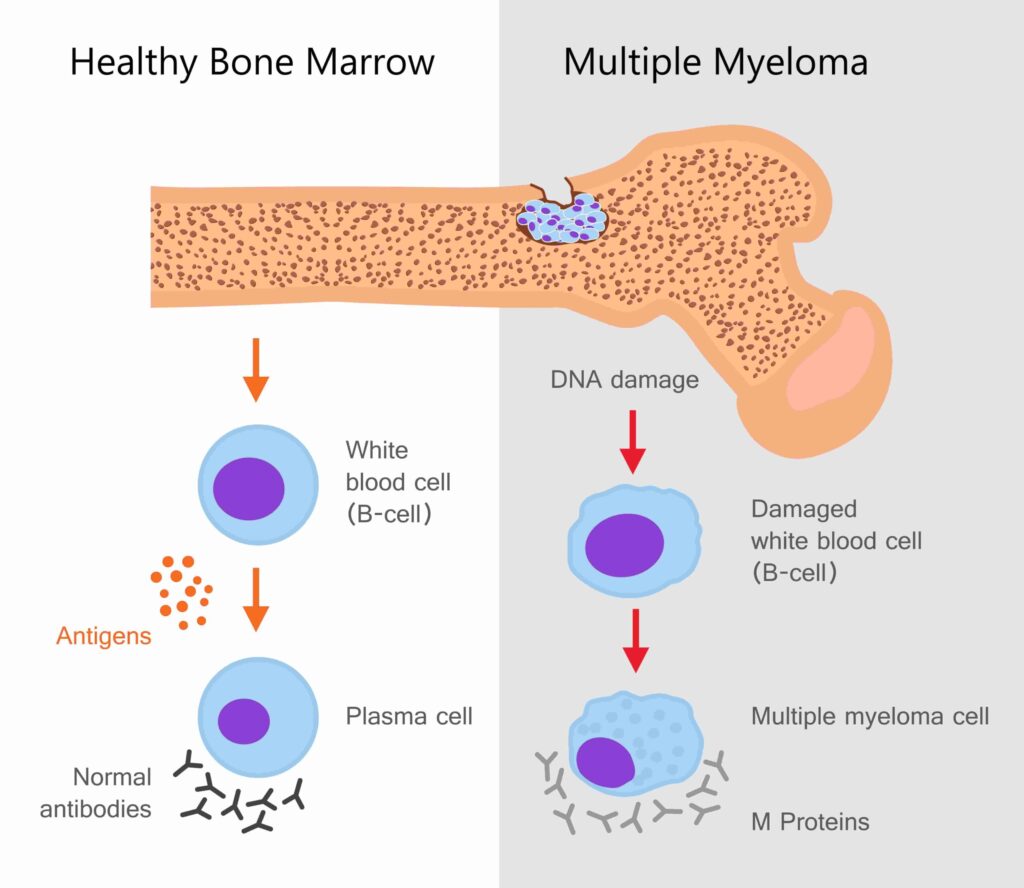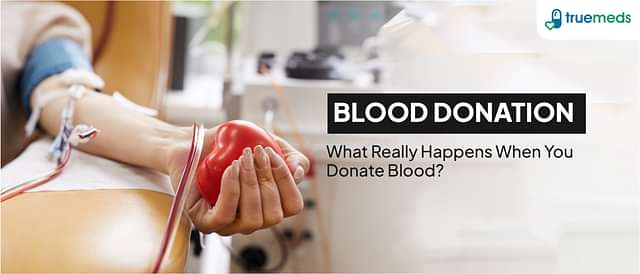Know what is multiple myeloma and its treatment
Last updated on : 16 May, 2024
Read time : 5 min
What is Multiple myeloma?
Multiple myeloma is a type of cancer that starts in a white blood cell called a plasma cell. It grows and spreads to other parts of the body, too. Healthy plasma cells help you to prevent infections by making antibodies that can recognize and attack germs, which helps you fight off infections.
It’s common for infected cancerous plasma cells to build up in the bone marrow and push out healthy blood cells. These are called multiple myelomas.
There is not always a need for treatment for many myelomas immediately. If the multiple myelomas aren’t growing and aren’t causing any signs or symptoms. your doctor may want to keep in contact with you.

How do multiple myelomas happen to?
Myeloma develops when there is a change in the DNA of the plasma cells. DNA is the instructions for the cell so it knows what to do and when. The change happens to the DNA when the bone marrow is making new plasma cells. The abnormal plasma cell then produces more abnormal cells. These are myeloma cells.
The myeloma cells produce an abnormal form of one of the types of antibodies. You might hear your doctor call the antibodies abnormal proteins, paraproteins, monoclonal proteins, or a monoclonal spike. They aren’t able to work normally and so can’t help fight infections.
The paraprotein is often found in the blood and urine if you have myeloma. Blood and urine tests are a way of diagnosing and monitoring myeloma. As well as the whole antibody (immunoglobulin), often a small part called the free light chain (called Bence-Jones in the urine) is also made in large amounts by the myeloma plasma cells.
Myeloma doesn’t form a lump or a tumour. Most of the problems it causes are because of a build-up of abnormal plasma cells in the bone marrow and the paraprotein in the body. Myeloma affects areas where you have active bone marrow. This includes your arms and legs and your shoulders as well as your spine, skull, pelvis and rib cage. It affects several places in the body which is why it is sometimes called multiple myeloma.
Multiple myeloma signs and symptoms
The signs and symptoms aren’t always easily recognizable. Multiple myeloma may not give you any early symptoms. As cancer gets worse, the symptoms change a lot.
1. Fatigue-
When your cells are healthy, it’s easy for your body to fight off germs. As myeloma cells replace bone marrow then the body needs to function extremely hard to fight with very few cancer cells. So, you tired out much more quickly.
2. Bone problems-
Myeloma can stop your body from making new bone cells, which can lead to problems like bone pain, brittle bones, and fractured bones.
3. Kidney problems-
Myeloma cells make proteins that are harmful and can injure or damage the kidneys.
4. Low blood counts-
Myeloma cells rapid out in healthy blood cells, which can cause low red blood cell counts (anaemia) and low white blood cell counts (leukopenia). When there aren’t enough healthy blood cells, it is difficult to prevent infections.
5. Other infectious diseases-
Minimal antibodies in your blood make it more difficult to prevent diseases.
It also has other common signs and symptoms, such as:
- Nausea
- Losing weight
- Constipation
- Loss of hunger
- A feeling of weakness or numbness in your legs
- Swelling in your legs
- Higher thirst
- Excessive urination
- Dizziness
- Confusion
- A lot of pain, especially in your back or stomach
Multiple myeloma Causes
The exact cause of multiple myeloma is unknown. But it starts with one abnormal plasma cell that quickly grows in the bone marrow.
The resulting cancerous myeloma cells don’t have a typical life cycle. But it starts with one abnormal plasma cell that quickly grows in the bone marrow. This can adapt your body and impair the production of healthy cells.
Myeloma happens in about half of people. In the myeloma cells, part of one chromosome has switched places with another part of another chromosome. This is what is called a move. To turn on the oncogene, this can happen next to it.
Multiple myeloma treatment
There’s no cure for multiple myeloma. But there are treatments that can help ease the pain, reduce complications, and slow the disease’s development. Treatments are only used if the disease gets worse.
If you don’t have any symptoms, your doctor probably won’t suggest treatment. Instead, your doctor will closely check your condition for signs that the disease is getting worse. This usually requires regular blood and urine tests.
If you need treatment, you usually have the following choices:
1. Targeted therapy:
Targeted therapy drugs stop myeloma cells from making a chemical that breaks down proteins. This kills the cancer cells. During targeted therapy, the doctor will recommend drugs like bortezomib (Velcade) and carfilzomib. Both are given through a vein in your arm.
2. Biological therapy:
Biological therapy drugs use your body’s immune system to attack myeloma cells. Most of the time, doctors will recommend thalidomide (Thalomid), lenalidomide (Revlimid), or pomalidomide (Pomalyst) to boost their immune systems.
Lenalidomide is like thalidomide, but it doesn’t have as many side effects. It also seems to be more potent.
3. Chemotherapy:
In this therapy, a strong type of drug treatment kills fast-growing cells, like myeloma cells. Chemotherapy drugs are often given in big doses, especially before a stem cell transplant. The doctor will give drugs through an IV or as medications.
4. Radiation therapy:
Radiation therapy uses strong beams of energy to destroy or stop the growth of cancer cells by damaging them. Sometimes, this kind of treatment is used to quickly kill myeloma cells in a certain part of the body.
Buy medicines online through Truemeds at the best price and discounts. For all the latest coupons and offers on branded and generic medicines, follow us on Instagram and Facebook.
Disclaimer
Our healthcare experts have carefully reviewed and compiled the information presented here to ensure accuracy and trustworthiness. It is important to note that this information serves as a general overview of the topic and is for informational purposes only. It is not intended to diagnose, prevent, or cure any health problem. This page does not establish a doctor-patient relationship, nor does it replace the advice or consultation of a registered medical practitioner. We recommend seeking guidance from your registered medical practitioner for any questions or concerns regarding your medical condition.
Popular Articles
Recommended Articles
Recent Articles
Top-Selling Medicines:
...View more
Top-Selling OTC:
...View more
Company
About UsHealth ArticleHealth StoriesDiseases & Health ConditionsAll MedicinesAll BrandsNeed HelpFAQSubscribe
Registered Office Address
Grievance Officer
Download Truemeds

Contact Us
Our customer representative team is available 7 days a week from 9 am - 9 pm.
v3.7.8
Our Payment Partners



























































